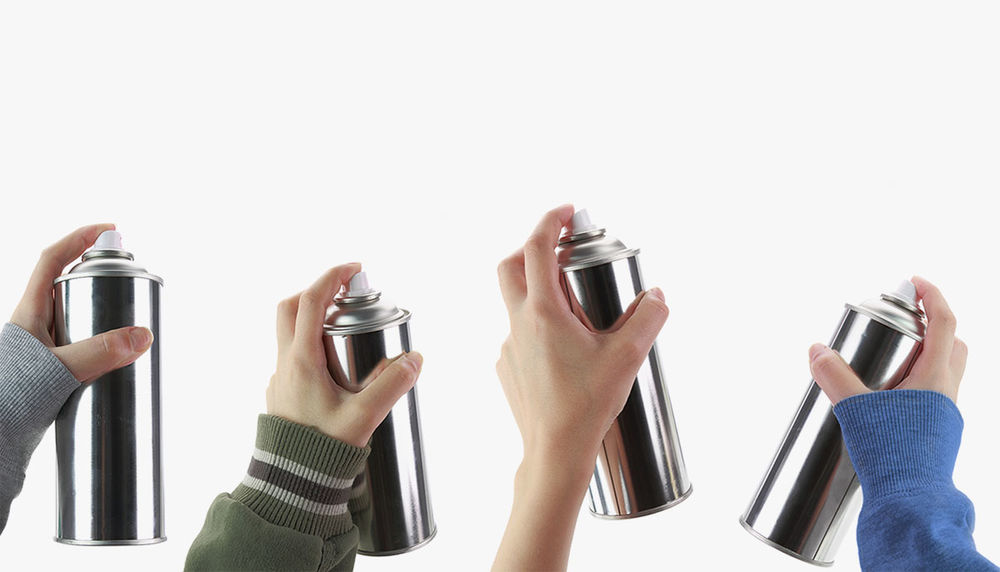This website uses cookies to ensure the best experience possible.
Privacy policy
Imprint

Is an aerosol can more recommendable - Also for the demands of the cycling scene?
Recyclable, more sustainable, safe and efficient in their use: In our modern times, spray cans (colloquial for aerosol cans - aerosols are the propellants used in the can) are more or less despised - unjustly? As an expert for optimal lubrication in the cycling scene, innobike has taken a close look at the issue - and drawn the logical conclusion!
"Planet Plastic" and a fact about the spray can (aerosol can)!
According to Wikipedia, plastic is colloquial for plastics that mainly consist of macromolecules, and these macromolecules, in turn, are polymers. (1) Currently, however, only approximately 40 % of plastic is reused or recycled. Incineration is cheaper than recycling. Therefore, according to a t-online report a few weeks ago, only a minimum of 36 percent of plastic in Germany had to be recycled until 2019. (2) Plastic that is not incinerated will probably end up in our oceans, won't it ...? An excerpt from the Fraunhofer Institute on degradation says that the time required for the degradation of different polymers in the environment may differ by at least three orders of magnitude. In particular in the case of persistent polymers, there are major methodological uncertainties. The few studies available suggest degradation times of up to 2,000 years! (3)
The fact is: Completely emptied spray or aerosol cans, however, are almost fully recycled!
How exactly does the recycling of spray cans (aerosol cans) work?
According to the Federal Statistical Office, completely emptied spray cans are recycled without any problems via the system for collecting recyclables. As early as 2016, more than 327,600 tons of used tinplate and aluminium packaging were recycled in Germany (4). The Aerosol Association further explains that this corresponds to almost complete recycling of this packaging in 'dual systems'. For recycling, spray cans are separated into their starting metals aluminium and tinplate. Aluminium is a pure metal and can be recycled without any special pretreatment. Aluminium cans are sorted out from other packaging materials using an eddy current separator. The cans are cleaned and finely shredded, melted and cast, and can then be flattened into sheets. Melting the aluminium requires only up to a quarter of the energy that is needed to produce new aluminium. Tinplate is made of steel and therefore a valuable raw material that can be recycled without any loss of quality. During the recycling process, tinplate cans are transported on conveyor belts to the so-called magnetic separator where an oversized magnet pulls the cans out of the packaging materials. In steel mills they are melted, cast and flattened for further processing. Tinplate recycling yields enough material for several billion new tinplate cans, including spray cans, of course. The use of tinplate scrap saves on steel production - for Germany this means a saving of 1.5 tons of ore to be mined annually at great expense and the long-distance transport of approx. 0.5 tons of fuels (coal, coke, heavy oil) per ton of recycled tinplate scrap. (5)
The spray can (aerosol can) is ... safe!
Regarding the safety of aerosol cans, the Association states that, when used as intended and correctly, aerosols are not only practical, but also completely safe - be it at home or at work. As some basic rules must be observed when handling aerosol cans, manufacturers always print on each spray can all the information, safety instructions and, if necessary, specific labels required for the user. Further information on safe handling as well as tips on correct application are added depending on the product. (6)
The environmental aspect of the spray can (aerosol can)!
When it comes to spray cans, the question often arises as to their impact on the environment, particularly their impact on the climate. In this respect, too, the facts are convincing. After all, the use of propellants and solvents in the aerosol industry accounts for only a minimal percentage (0.006 percent) of total emissions of climate-changing gases. Emissions from spray cans are therefore absolutely insignificant in terms of their climate impact (greenhouse effect). The concerns about spray cans, which are still often wrongly associated with CFCs (chlorofluorocarbons) today, have long since been consigned to history: According to the Aerosol Association, as early as the end of the 1980s, the industry voluntarily reduced the use of CFCs as propellants to practically zero within two years. (7) One of Germany's leading climate researchers, Prof. Dr. Reinhard Zellner of the Institute for Physical and Theoretical Chemistry at the University of Essen, attests to the safety of aerosol sprays with regard to the climate, stating that the impact of propellants and solvents used by the aerosol industry on environment, stratospheric ozone depletion, anthropogenic climate change and photosmog is negligible from today's perspective.
A brief overview of the ingredients and our conclusion!
What do our aerosols contain - in comparison with the lubricant in the plastic bottle? In addition, they only contain propane-butane as a propellant gas. This gas mixture is well known to most people from barbecues or camping and is used there without any problems. This is exactly what you will find in our aerosol cans! Considering this aspect and all others mentioned - be it recycling, environment and/or safety of the aerosols - we have come to the following conclusion: We offer our customers the innovative, high quality lubricants in both packaging options - the plastic bottle or the spray can - but we clearly recommend the aerosol solution ... Just try!
List of sources:
- https://de.wikipedia.org/wiki/Kunststoff
- https://www.t-online.de/leben/plastik/id_84105554/plastik-wird-recycelt-oder-fuenf-probleme-mit-kunststoffmuell.html
- https://www.umsicht.fraunhofer.de/content/dam/umsicht/de/dokumente/publikationen/2018/kunststoffe-id-umwelt-konsortialstudie-mikroplastik.pdf
- Federal Statistical Office: "Abfallentsorgung Fachserie 19 Reihe 1 - 2016" (Tabelle 22)
- https://www.aerosolverband.de/spraydose/recycling.html
- https://www.aerosolverband.de/spraydose/sicherheit.html
- https://www.aerosolverband.de/spraydose/umweltaspekte.html
